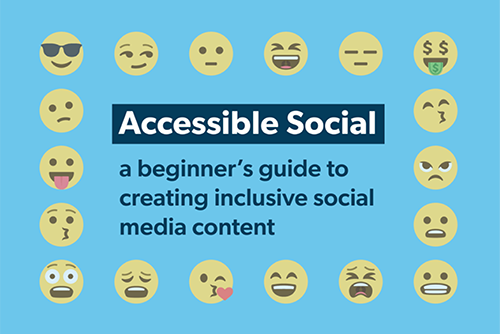Complete the Accessible Social Video Lesson
Learn how to create accessible social media content with digital strategist and accessibility advocate Alexa Heinrich. Alexa will take you through inclusive best practices for copy and formatting, visuals and images, and audio and video. The entire presentation is packed with useful tips and info as well as demonstrations of good and bad social media content.
Leverage Our Interactive Social Media Accessibility Checklist
Use the Accessible Social Media Checklist to double-check your social media content before publishing it online. Please note that this checklist is not meant to be exhaustive or a fix-all for your content. It will remind you to include accessible best practices in your social media strategy and help you develop good content creation habits. Before you know it, they’ll become a natural part of your process and you’ll no longer need the checklist!
Additional Resources

Social Media Platform Accessibility Advisories
Access a list of known issues on different social media platforms that impact accessibility.

Accessible Social Guidebooks
Accessible Social also provides e-books and printable guides - both a beginner's guide to accessible social and one focused on crafting your image accessibility skills.
